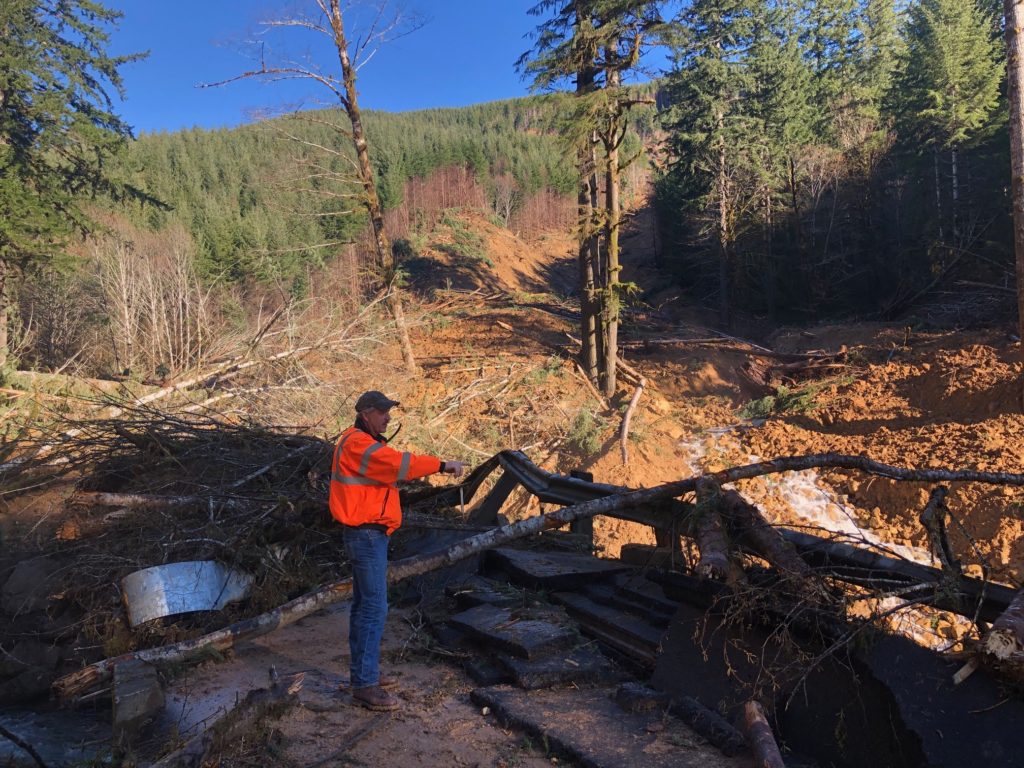
By QUINTON SMITH/YachatsNews.com
If it was any other landslide in a remote section Oregon’s Coast Range, there would not be much concern. Some private or Forest Service logging roads would be closed. The landowner would monitor it. And there it would sit – or move — without much attention.
But in a mountain range prone to regular earth movement, the slide 3.5 miles up Fall Creek in the Alsea River valley 27 miles east of Waldport is no ordinary slide.
When it let loose last December, a 20-acre slide on Weyerhaueser property buried a stretch of a Lincoln County road and heavily damaged a single-span concrete county bridge.
Now there’s a bigger worry.
An investigation by Weyerhaeuser and Oregon State University geologists indicate that 100 acres of the hillside is “unraveling” and likely to fully collapse in the next few years.
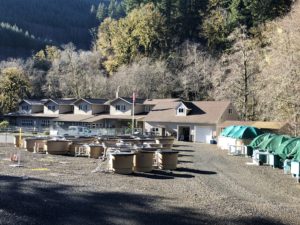
And that could threaten the state of Oregon’s only facility devoted to exclusively to research on salmon and steelhead hatchery practices.
The Oregon Hatchery Research Center, operated jointly by the Oregon Department of Fish & Wildlife and OSU, sits one mile below the slide. When the slide cut loose Dec. 20, the debris forced a two-day evacuation of the center and housing for its three employees, and plugged intakes in Fall Creek that supply water to research projects.
Silt and debris from the slide continued to affect the research center during heavy rainstorms in January, including one incident when water intakes plugged with sediment, alarms failed and the center lost 90 percent of fish involved in research projects.
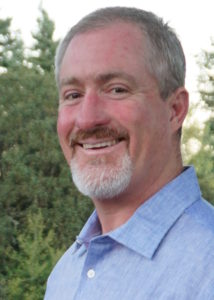
Marc Johnson, acting director of the research center, said ODFW has since improved the intake and alarm systems, but concedes that silt and sediment from the slide “are a real issue for us.”
“At present we don’t have a great fix for that,” he told YachatsNews.
Neither does Weyerhaeuser. Last month it requested that Lincoln County close the road above the research center and wait to see what happens over the next few years. County commissioners on June 7 approved the closure.
The entire 100-acre hillside is “susceptible to failure,” Weyerhauser geologist Susan Shaw told Lincoln County commissioners last month, saying 4 million cubic yards of material could end up sliding toward Fall Creek.
Shaw said the slide “will continue but we cannot predict when” and has the potential to fully dam Fall Creek and create a reservoir behind it.
Focus on hatchery research
The research center sits on the site of a state coho salmon hatchery that closed in 1997. Eight years and $7.5 million later it reopened as a research center for scientists from around the Northwest and the world to conduct research on hatchery salmon and steelhead.
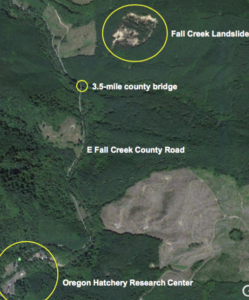
Its yearly operating budget is $390,000, with another $400,000 to $600,000 spent by researchers.
Following the December 2016 rains, portions of a steep hillside on Weyerhaeuser land started slipping one mile upstream. It contained 30-to 40-year-old second-growth trees, according to the Oregon Department of Forestry. While the land didn’t move much, silt from the slide was a constant winter problem for the center’s clean water intake.
The bigger worry was that if the slope failed completely, it could smother Fall Creek with a debris dam, water would build up behind it and then the whole thing collapse and wipe out the center and homes in the valley below.
In 2018, the state installed a low water alarm at the center and the county set up a “reverse 9-1-1” call system to alert hatchery employees and downstream residents of a landside.
That’s what happened in December.
During a storm that dropped more than 5 inches of rain on the area, 20 acres gave away, racing downhill, smashing into a 76-foot long county bridge and blocking Fall Creek for 1-2 hours.
That triggered low-flow alarms at the research center, allowing hatchery workers and 8-9 property owners downstream to evacuate.
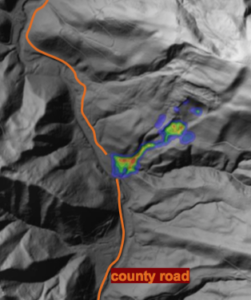
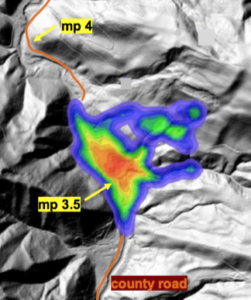
‘Tip of the iceberg’
Now after more study, Lincoln County Public Works director Roy Kinion told commissioners that December’s slide is “the tip of the iceberg” and that there is a “much larger potential for a catastrophic failure” of the entire hillside.
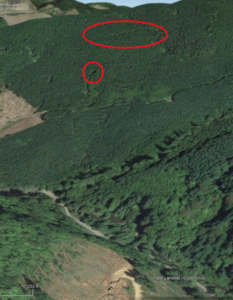
“We expect this slide to continue unraveling to the ridge line itself,” Shaw told commissioners during a PowerPoint presentation.
But no one is sure when that might happen, Shaw said, and therefore the request to close the road for at least the next 12-18 months.
Kinion said because the slide is aimed directly at the county bridge, he said it should be removed and three of four undamaged concrete spans put to the side. And wait to a winter or two to see what happens next.
In the meantime, so will the state’s operators of the hatchery research center.

The center’s on-site manager, Jennifer Krajcik, said changes have been made to the water intake system and there are now alarms on individual research tanks. Despite the loss of most research fish in January “We managed to salvage both projects.”
Krajcik and Johnson said while the research center is the focus of many projects, others start there and then are carried out at other ODFW hatcheries.
“The (slide) does not upend the ability to carry out our research mission,” Johnson said. “The point is that OHRC is more than a facility, it’s a think tank.”
He said somehow losing the OHRC “would be a tremendous loss … there’s no downplaying that. Our budget does not allow us to build it in duplicate.
“But our facilities are in nature and therefore at risk of natural disasters,” Johnson said, pointing out that ODFW lost a hatchery east of Roseburg in last September’s wildfires. “We just have to manage that risk.”
To see Weyerhaeuser geologist Susan Shaw’s presentation to Lincoln County commissioners go here


